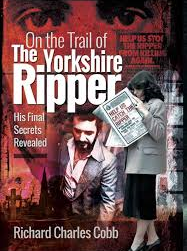
The Pembrokeshire Murders: Catching The Bullseye Killer
I recently picked this book up at my local library, as it was a book I had considered buying online a couple of times before. A synopsis is as follows:
The book details the hunt for, arrest, and conviction of one of Wales’ most infamous, and possibly prolific serial killers, John William Cooper. Cooper was convicted in 2011 of the Scoveston Park murders of Richard and Helen Thomas in 1985, the coastal path murders of Peter and Gwenda Dixon in 1989, and of the rape and indecent assault of two teenage girls in 1996. He was sentenced to a whole life tariff, and after an appeal in 2012 against this ruling was dismissed, Cooper will now die in prison. The author of the book, Steve Wilkins, is the retired police officer that was in charge of the investigation and headed the team responsible for bringing Cooper to justice.
It is a case that has interested TTCE for a number of years, and being the only book written about the subject (to my knowledge), I was eager to read it. At 256 pp, it contains two sets of illustrations concerning the case. It begins by setting the scene the morning that Cooper was convicted and sentenced to life imprisonment for the above mentioned crimes, which is done rather well and will hold the reader’s attention. It then goes back to begin at the chronological order of events, detailing the deaths of the Thomas siblings, the deaths of the Dixons, and the assault and rape upon the teenage girls. Following this, the book then explains how the cold case reviews suggested that the crimes were linked, how they arrived at having John Cooper in the frame as a suspect, and the painstaking forensic work that was undertaken to find evidence to prove Cooper’s guilt beyond any reasonable doubt. It follows the evidence gathering, the remarkable forensic results, Cooper’s arrest, charging, and ultimately trial and conviction. For explanation of the title of the book, it should be explained that the title stems from a rather remarkable piece of evidence where an image of John Cooper was taken from an appearance on the 1980’s TV gameshow Bullseye, on which he had appeared as a contestant. This was then matched with an artist’s impression of the suspect in the Dixon murders.
No review is complete without examining the positives and negatives of any book, so as follows. On the positive side, Catching The Bullseye Killer contains interesting images, at least half of these are good quality evidence photos of exhibits that were gathered for forensic evidence to prove Cooper’s guilt. There are also photographs showing the exact moment of Cooper’s arrest for these crimes, as detailed within the book. It contains verbatim interview transcripts with Cooper, which will always catch the eye and impress any student of true crime (it did this one anyway). The coverage of the forensic work that was undertaken throughout the investigation is very in depth, well written and fascinating to read also.
On the negative side, out of the two separate sets of photographs contained within the book, the second set seems to largely serve to introduce the investigating team at various functions. TTCE feels that of much more value and interest would have been possible crime scene photographs from Scoveston Park and the site of the Dixon murders. Also, TTCE was left feeling that scant coverage was given to the background and accounts of the Scoveston Park murders, the Dixon murders, and the 1996 rape and assault (just 24 pages in total for all). I would have preferred a much more in depth coverage of each case.
It was also apparent that a large portion of the book in total was used introducing the investigating team – where it is safe to say that that is not the primary angle of interest someone has when reading a book on the subject of true crime. I suspect the reason for this is because as previously mentioned above, the book is written by the police officer who headed the team responsible for bringing Cooper to justice, so firsthand knowledge and familiarity, perhaps even bias, stands out here more so than it would had it been a book written solely by a researcher. For example, the previous TTCE book review was on a book written that concerns the case of the infamous 1985 White House Farm Murders. This was written by a researcher unconnected with the case – therefore has no objectivity or bias – and is without doubt THE definitive account of the crimes and an instant classic and must have.
Disappointing as well in The Pembrokeshire Murders: Catching The Bullseye Killer was the complete lack of mentioning and nod towards any other possible cases that were being examined with a view to Cooper being possibly responsible – one such in question is the subject of a previous Blog post by TTCE (The Llangolman murders). There are several suspected, this is just one that TTCE was able to research and chronicle here.
Overall however, The Pembrokeshire Murders: Catching The Bullseye Killer is a recommended read. It is an interesting case, and being the sole book (currently) concerning John Cooper, is worth the readers time. Take into account the opinions raised here by TTCE and make up your own minds.



